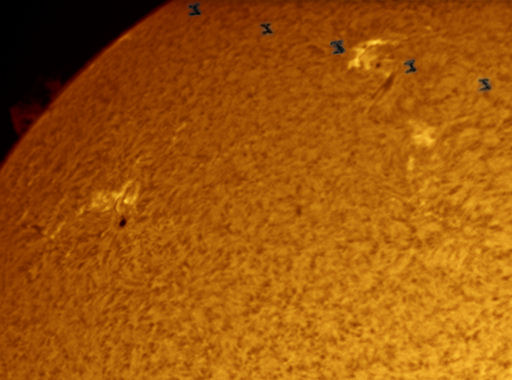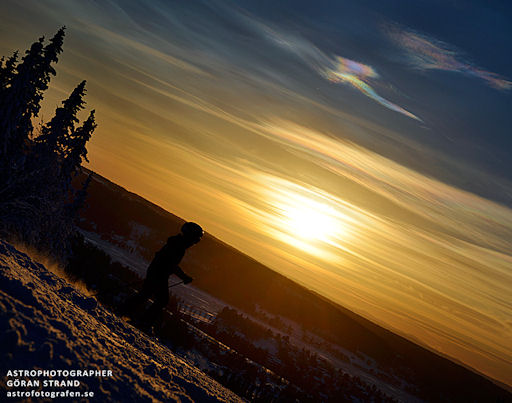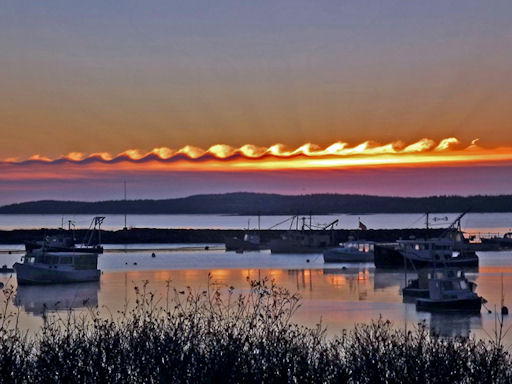Thirty-five new items have just been added to our Meteorite Jewelry collection. Browse the Space Weather Store for something out of this world. | | |
QUIET SUN: With no sunspots actively flaring, the space weather forecast is quiet. NOAA analysts put the odds of a significant eruption today at no more than 10%. Solar flare alerts: text, voice.
WINGED SUNSPOT: The sunspot number briefly jumped yesterday, Dec. 29th, when a winged silhouette flew across the face of the sun. It was the International Space Station (ISS). Earl Foster photographed the transit from Garland, Texas:

Flying faster than 17,000 mph, the ISS took only a fraction of a second to cross the entire solar disk. "I knew precisely when to look thanks to CalSky," says Foster, who used a Solarmax90 solar telescope and a DMK41 digital camera to record the event.
The station's path took it directly in front of an unnumbered active region just north of sunspot AR1638. Solar activity has been low for weeks. So, as expected, no flares occured during the transit. With the sun so quiet, the only breaks in the monotony are provided by spaceships passing by.
Realtime Space Weather Photo Gallery
NACREOUS CLOUDS: Arctic sky watchers should be alert for bright splashes of color this weekend: The nacreous clouds are back. Göran Strand of Östersund, Sweden, photographed this specimen on Dec. 28th:

"The sky was dotted with small but intense nacreous clouds," says Strand. "They lasted for a couple of hours and changed form very often." A close-up photo highlights the vivid colors that are the signature of these clouds.
Atmospheric optics expert Les Cowley comments: "Of all Earth's clouds, nacreous clouds are the most spectacular, and a very rare treat for skywatchers. For up to an hour after sunset or before dawn they glow like eerie electric discharges or gas jets in the darkening sky, their filmy shapes slowly curling and uncurling with intense shifting colors. They are composed of tiny ice crystals more than twice as high as ordinary clouds, 9-16 miles up, in the stratosphere and form at temperatures of minus 85 Celsius and below. The crystals are all of similar size and they diffract the high altitude sunlight to make the colours."
"Search for nacreous clouds at high latitudes (e.g., Scotland, Scandinavia, Iceland, Northern US) in winter and preferably downwind of mountains," Cowley advises. "They like stormy weather that perhaps creates gravity waves to loft the necessary moisture to make them upwards across the tropopause into the stratosphere. Once seen they are never forgotten!"
Realtime Nacreous Cloud Photo Gallery
VAN GOGH CLOUDS: On Christmas morning, Gene Hart of Jonesport, Maine, woke up early to enjoy the sunrise before opening presents. What he saw may have been the best gift of all. "There was a cloud formation showing a remarkable series of wave shapes," says Hart. "They were backlit by the rising sun over Moosabec Reach." He snapped this picture of the harbor using a 14-megapixel digital camera:

"I also took some 28x zoom images of the wave structure," says Hart. The close-ups are a must-see.
These clouds, sometimes called "billow clouds," are produced by the Kelvin-Helmholtz instability when horizontal layers of air brush by one another at different velocities. A better name might be van Gogh clouds: It is widely believed that these waves in the sky inspired the swirls in van Gogh's masterpiece The Starry Night.
Realtime Space Weather Photo Gallery
Realtime Aurora Photo Gallery
Realtime Noctilucent Cloud Photo Gallery
[previous years: 2003, 2004, 2005, 2006, 2007, 2008, 2009, 2011]

